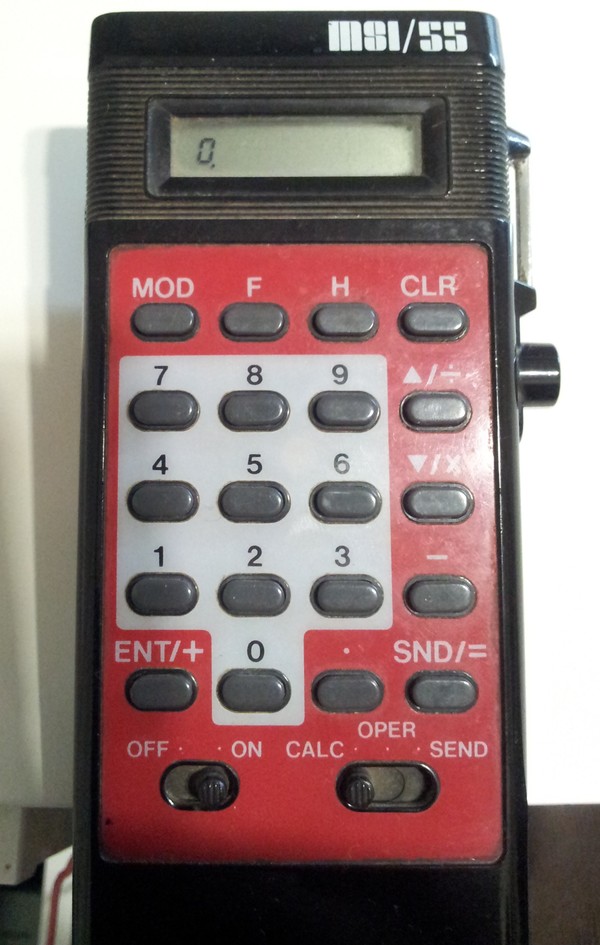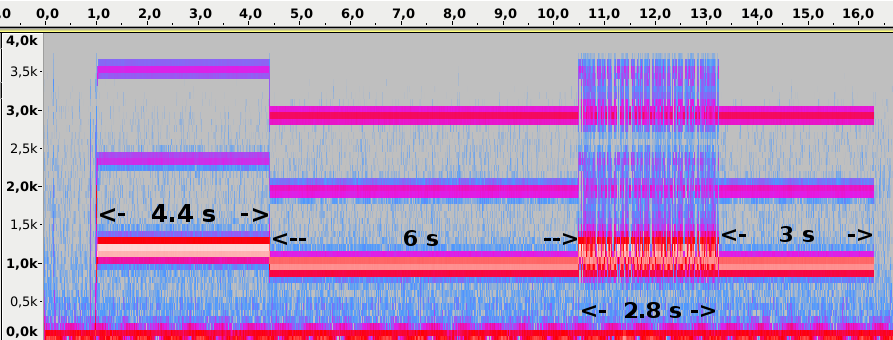MSI / 55 - the old terminal for ordering goods to a branch in the central store

The device, shown in KDPV, was designed to automatically send orders from the branch to the central store. To do this, it was necessary, having previously entered into it the articles of ordered goods, to call the number of the central shop and send data on the principle of an acoustically mated modem. The rate at which the terminal sends data is assumed to be 300 baud. It is powered by four mercury-zinc cells (then it was possible), the voltage of such an element is 1.35 V, and the entire battery is 5.4 V, so it all worked from the 5 V power supply. Using the switch, you can select three modes: CALC - a normal calculator, OPER - you can enter numbers and other signs, and SEND - send, but at first you couldn’t squeeze any sound. It is clear that you can somehow save the articles and then send them, but how? If you can find out, the author will try to analyze the sounds of this program , or even somehow adapt the terminal for digital forms of amateur communication.
The device on the reverse side, the dynamic head and the battery compartment are visible:
')

The most important thing is how to squeeze the sound out of the terminal - the author learned from a person who once had the same terminal. You need to enter the initialization code, and then you can enter articles. Move the switch to the OPER position, the letter P appears. Enter 0406091001 (the author does not explain what it is, probably the user name) and press ENT. The letter H appears. Enter 001290 (and this is probably the password) and press ENT again. The number 0 appears. You can enter articles.
You should start the article with the letter H or P (here the author made a mistake, there is no letter P on the keyboard, there is an F), then the numbers follow. After pressing the ENT key, a line of the type 0004 0451 appears, where with each successive article the first number increases and the second decreases, which means that the number of occupied and free cells, respectively. Buttons with arrows can scroll through the entered articles, but how to delete them is unknown to the author (so the CLR key did not help). As for each of the articles specify the number, it is not said.
Entering the numbers, you must then switch the switch to the SEND position and press the SND / = key. The indicator will display the message SEND BUSY, and the transfer will begin:

For 4.4 seconds, a tone with a frequency of 1200 Hz sounds. Then for another 6 s - 1000 Hz. The next 2.8 seconds go into the transmission of the modulated signal, and behind them another 3 seconds again go to the transmission of the tone at 1000 Hz.
If you take a closer look at the spectrum, in fact, instead of 1000 Hz, 980 is obtained, and instead of 1200 - 1180. The author wrote down the WAV file, installed the program mentioned above (“man” to it here ) and launched it like this:
minimodem -r -f msi55_bell103_3.wav -M 980 -S 1180 300 Happened:
### CARRIER 300 @ 1000.0 Hz ### H00 90+ H00 90+ H00 90+ H 3 56 + Ʊ 3 56 + 9 + ƴ56+ H963 5 + ### NOCARRIER ndata=74 confidence=2.026 ampl=0.147 bps=294.55 (1.8% slow) ### This is similar to the Bell 103 modulation . Although there are generally 1070 and 1270 Hz.
But didn’t the frequency of the terminal “float away”? The author edited the wav file so that the speed increased by 1.8%. It turned out almost exactly 1000 and 1200. New program launch:
minimodem -r -f msi55_bell103_4.wav -M 1000 -S 1200 300 -R 8000 -8 --startbits 1 --stopbits 1 And she answered:
### CARRIER 300 @ 1000.0 Hz ### H00 90+ H00 90+ H00 90+ H 3 56 + Ʊ 3 56 + 9 + ƴ56+ H963 5 + ### NOCARRIER ndata=74 confidence=2.090 ampl=0.148 bps=299.50 (0.2% slow) ### In both cases, the result carries a semantic load, despite the errors. Article H12345678 "pulled out" of the signal as
H 3 56 - the numbers that were able to be disassembled, are in their places. There may be poor filtering in a power supply unit, which is why a 50 Hz background is superimposed on the signal. The program reports a low confidence value (confidence = 2.090), which indicates a distorted signal. But now at least it is clear how the terminal sent data to the computer of the central store when it still existed.Source: https://habr.com/ru/post/451426/
All Articles